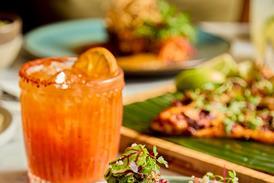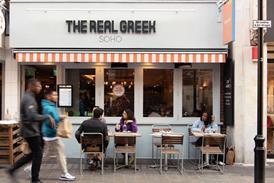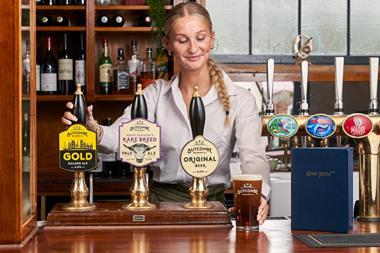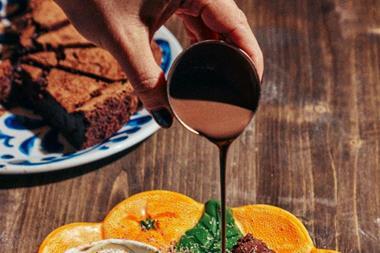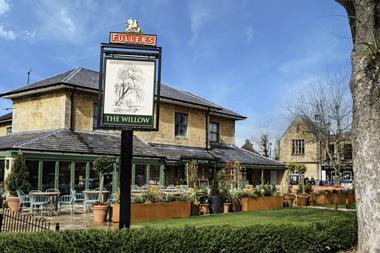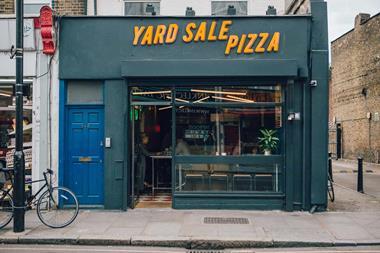With the wider issues facing the market, many believe the UK’s eating and drinking-out sector is ripe for consolidation. However, does it work for everyone involved and, in current conditions, is it a case of looking outside the box for the best partner for your business, asks AlixPartners’ Graeme Smith
Consolidation has always played a significant role in the UK’s eating and drinking-out market, allowing businesses to grow, entrepreneurs to secure exits after years of hard work, and enabling companies to transform their models. It has been a driving force of evolution across the sector. Recently, we have seen Stonegate Pub Company further consolidate the UK bar sector with acquisitions including Be At One and The Restaurant Group (TRG) transform its business strategy by acquiring Wagamama. Many believe that the sector is long overdue a period of intense consolidation, especially in casual dining. However, does anyone really have the appetite or courage to bring together the likes of, say, Prezzo and Carluccio’s, or GBK and Byron? Only time will tell.
Consolidation, more often than not, is a strategic move, allowing a business to enter a different segment of the market, add a stronger brand or reposition away from an underperforming division. The key to success is being able to deliver the cost synergies and commercial upsides identified in the diligence process. Strategic acquisitions are predicated on being a good deal for both parties as the trade buyer can outbid a standalone private equity investor because their “in price” is built on post-synergy levels of profitability. Casual Dining Group’s (CDG) acquisition of Las Iguanas is a good example, with Bowmark and Eren Ali happy with the exit price and CDG - having delivered the synergy upside - delighted with the deal.
Private equity, which has driven the majority of sector M&A in recent years, always considers exit options as part of due diligence. This means they often look two deals ahead. Whilst this was an easy assessment when the UK casual dining market was in its high growth phase, it is far more challenging in current market conditions. Current supply levels mean it is difficult seeing most single brand businesses growing beyond 100 sites nationally in anything other than a slow, gradual roll out. Slow longer-term growth in site numbers impacts standalone value and drives owners towards the trade sale option if value is the primary objective.
Ways forward
There are currently two main consolidation plays in the market. The value investor piece (driven by the ‘special situations’ or turnaround funds) which seeks to identify underperforming businesses that have been starved of investment. These can be acquired for a relatively low value, potentially by buying into the debt with a view to taking control. After acquiring businesses at a low point, they can then be restored to their former glory with appropriate investment. The challenge is to avoid “catching a falling knife”. Even with investment, successfully turning around a business is challenging but if successful the rewards can be large.
The second consolidation play is the traditional trade route. The trade buyer is looking to build scale, add brands and take advantage of synergies to allow them to buy at a price that is relatively cheap from their perspective once potential synergies are taken into account. The targets can be high growth businesses that diversify the purchaser into a new cuisine or market sectors such as “grab and go” or pure scale consolidation targets. “Scale” acquisitions allow the consolidator to drive head office savings but also can deliver procurement savings across the whole of the enlarged business. TRG’s acquisition of Wagamama and Azzuri’s purchase of Coco di Mama are examples of the former and Stonegate buying Bramwell pub estate allowed it to reset its drinks contract - driving material savings across the group - is a classic example of the latter.
Companies amassing a suite of young, exciting brands of which the concept and quality of offer fits into their estate have often been long-term winners here. Azzurri Group and Gondola before it, with emphasis on the Italian market, have managed to put together a portfolio of complementary brands to de-risk itself from changes in the market. Zizzi has developed into having a more female-focused, premium offer; ASK Italian is aimed at the family market; and Coco Di Mama is one of the key growth brands in the “food-to-go” market. CDG’s acquisition of Las Iguanas, principally provided synergies in streamlining central costs and obtaining procurement benefit. However, it also gave it a drinks-focused, and more relevant offer that provided the opportunity to convert some of its existing sites that were not ideally suited to Bella Italia or Café Rouge, driving material like-for-like sales growth across each of these units.
Suite of brands
Stonegate was launched with the goal of consolidating the UK high street’s pub and bar sector, and has been true to its word, using its acquisitions to bring new expertise and learnings into the business and increase its palette of concepts. Stonegate’s unique “house of brands” enables it to select the optimal format for any given site to tap into the latent demand for the area and maximise the fabric of the building itself, whilst also allowing it to operate complementary brands in one city or town centre. We would argue that it is only in the growing experiential concept market where there is currently a gap in its portfolio.
Consolidation has, in the majority, been the preserve of the bigger beasts in the sector, with their ability to raise war chests and secure synergies winning out. Traditionally, small multi-site operators have looked for investment to expand and roll out their brands. However, over the last few years we have started to see the emergence of specialist investors that bundle a number of these companies together under one head office function (with entrepreneurs freed up to drive growth) to reduce costs and create greater value. Living Ventures, White Rabbit Fund and Imbiba are good examples of this, incubating numerous brands under one umbrella. We would expect more of these groups to be developed over the coming years.
With the cost pressures in the market, lower levels of overall demand growth and fast-moving consumer tastes, we expect consolidation in the market to continue. With the changes at the top at CDG set to bed in later this year, it could play the role of consolidator with new chairman Rooney Anand at the helm. Given its success to date, we would expect Stonegate to continue to be an active acquirer of businesses that fit its strategy in the pub and bar market. This segment will likely be active, with Young’s and Fuller’s also acquisitive and groups like The Alchemist, Oakman Inns, Urban Pubs and Bars and Arc Inspirations already considering their options (or expected to do so) in the near future.
It could also be that interest is shown in the Asian-led part of the restaurant market. Could someone look to create an Asian food focused group, especially with one of that segment’s key players, Giggling Squid, currently reviewing its options, Rosa’s Thai recently securing funding and Pho already under Private Equity ownership?
Ensuring you have the right partner the next time you step into the dancefloor remains, as ever, crucial.
Graeme Smith is a managing director specialising in corporate finance at AlixPartners
Precis
We want to be together
With the wider issues facing the market, many believe the UK’s eating and drinking-out sector is ripe for consolidation. However, does it work for everyone involved and, in current conditions, is it a case of looking outside the box for the best partner for your business, asks AlixPartners’ Graeme Smith














